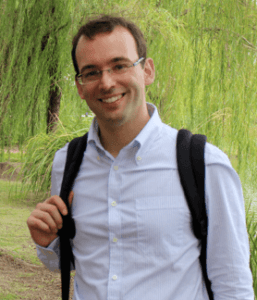The field of quantum foundations is grappling with an unexpected problem: the challenge of scaling up.
For much of the history of quantum theory, most researchers considered the problem of understanding its foundations to be divorced from working out its applications. But 20 years ago, a shift started.
Quantum information theory came to the fore, and with it rose the idea that puzzling quantum phenomena, like entanglement and nonlocality, could hold the key for the next technological revolution. This led many to turn their attention back to the building blocks of quantum theory, to reconsider its foundations from the perspective of information theory.
A recent book co-edited by Perimeter Faculty member Robert Spekkens and Giulio Chiribella, a University of Hong Kong professor, Perimeter Visiting Fellow, and CIFAR-Azrieli Global Scholar, seeks to provide a high-level view of these efforts, and to serve as a roadmap to the most promising research directions.
Embracing a pragmatic approach
Quantum foundations theorist Giulio Chiribella.[/caption]
Much of the research in the field has embraced a “pragmatic” approach, in which the laws of physics are characterized in terms of the fundamental limits to what can be known and achieved in experiments (as opposed to the “dynamicist” tradition, which does not factor in human agents or their purposes).
Using this method, theorists worked to establish the basic structures at the root of quantum information theory, to identify what powered such milestone applications as ultrafast quantum algorithms and quantum cryptography, and to isolate basic working principles that can be used to build new quantum protocols and applications.
Foil theories emerged as a useful tool in this effort. These theories describe the world as it could have been, were it not quantum mechanical. As the name suggests, such theories serve as “foils” to our current understanding of quantum mechanics: they provide a background against which the distinctive characteristics of quantum mechanics are thrown into relief.
As the field grew in size and popularity, there was a proliferation of new ideas and results. But this increased interest produced associated challenges. The diversity of approaches made it difficult to maintain a big picture of what was happening in the field, and the rise of specialist knowledge and language threatened to leave researchers out of touch with each other. These challenges were especially acute for newcomers to the field.
Cutting through the haze
In 2011, the conference “Conceptual Foundations and Foils for Quantum Information Processing” at Perimeter aimed to cut through the haze. By bringing together the full breadth of researchers working on the topic, among them physicists, computer scientists, and mathematicians, the gathering underscored both the potential of the union of quantum information theory and quantum foundations, and the need for a global view of the field and its goals.
[caption id="attachment_10265" align="alignleft" width="200"]
Quantum Theory: Informational Foundations and Foils, published by Springer[/caption]
Spekkens and Chiribella were two organizers of that conference. Their book Quantum Theory: Informational Foundations and Foils, published by Springer, seeks both to showcase the breadth of the field and to tease out common themes.
The book includes 14 original contributions from leading experts in the field, among them a number written by Perimeter researchers and alumni, including Lucien Hardy, Christopher Fuchs, Markus Mueller, and Roger Colbeck.
The 29 contributing authors are not trying to overthrow quantum mechanics. On the contrary, they want to establish new and more efficient ways to reason about it.
Quantum theory is one of the pillars of modern science, thoroughly tested and highly successful. Understanding its core, they say, could lead to new ways to attack the most challenging problems of theoretical physics.
As Perimeter Faculty member Lucien Hardy wrote in his chapter, “It is in the finding of new physics that we can expect a real payoff of this program.”
Further exploration
About PI
Perimeter Institute is the world’s largest research hub devoted to theoretical physics. The independent Institute was founded in 1999 to foster breakthroughs in the fundamental understanding of our universe, from the smallest particles to the entire cosmos. Research at Perimeter is motivated by the understanding that fundamental science advances human knowledge and catalyzes innovation, and that today’s theoretical physics is tomorrow’s technology. Located in the Region of Waterloo, the not-for-profit Institute is a unique public-private endeavour, including the Governments of Ontario and Canada, that enables cutting-edge research, trains the next generation of scientific pioneers, and shares the power of physics through award-winning educational outreach and public engagement.
You might be interested in




